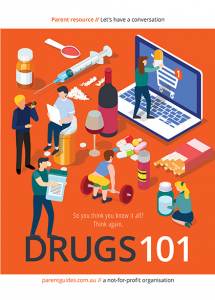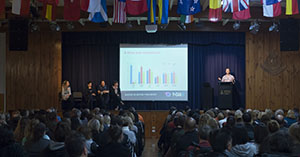By Cheryl Critchley

Sniffing inhalants such as glue, petrol and aerosols is a cheap and dangerous way for young people to achieve a “high”.
The substances used are often affordable and easily obtained. About 17 per cent of Australian high-school students has used inhalants, making them more popular than individual illicit drugs such as heroin, cocaine and ice. These substances can seriously affect or even kill if an overdose occurs.
Essentially, inhalants are common household, industrial and medical products that produce vapours that can be inhaled to produce a “high”. Common inhalants include aerosol sprays, spray paint and paint thinner, felt-tipped pens, correction fluid, gas from lighters or barbecues (butane), cleaning fluid, glue, petrol and nitrous oxide.
The use of inhalants is more common in younger children than older children.
Inhalants are commonly sprayed into a plastic bag, poured into a bottle or soaked onto a cloth or sleeve before being inhaled.
Sometimes they are inhaled directly from the container or are sprayed directly into the mouth or nose. This method can cause suffocation.
If the substance is inhaled many times or a particularly strong inhalant is used, it can cause an overdose.
OTHER NAMES
Glue, gas, sniff, huff, chroming, poppers
SHORT & LONG TERM EFFECTS
View the Australian Drug Foundation’s short and long term effects of inhalants here.
COMMON SOURCES*
- Aerosols: Hairspray, Deodorants, Spray paint, Fabric-protector spray, Computer cleaners, Asthma sprays
- Solvents: Nail polish removers, Paint remover/thinners, Correction fluids and thinners, Permanent marker pens, Petrol
- Cleaning Agents: Dry cleaners, Spot removers, Degreasers, Video head cleaners
- Gases: Fuel gas, Cigarette-lighter fuel, Refrigerant
- Food Products: Whipped-cream aerosols
- Anaesthetics: Gaseous, Liquid, Local
- Adhesives: Airplane glue, Other glues
- Nitrites: Poppers, Fluids, Room odorisers
Some of the chemicals found in these products:*
Acetone, amyl nitrite, benzene, butane, butyl nitrite, chlorofluorocarbons, cyclohexyl nitrite, dimethyl ether, ethyl acetate, enflurane, ethyl chloride, freon, fluorocarbons, lead, halothane, methyl chloride, methyl ethyl ketone, methyl butyl ketone, methanol, nitrous oxide, n-hexane, propane, petroleum distillates, trichloroethylene, trichloroethane, tetrachloroethylene, xylene.
* National Inhalants Information Service, www.inhalantsinfo.org.au
Drugs 101 is an informative resource that offers expert advice about drugs and how to start a conversation about them with your kids. It profiles people touched by addiction and explains what drugs are, how they work, their risks and how many young people use them.
Click here to purchase a copy.





Comments (3)
Comments are closed.